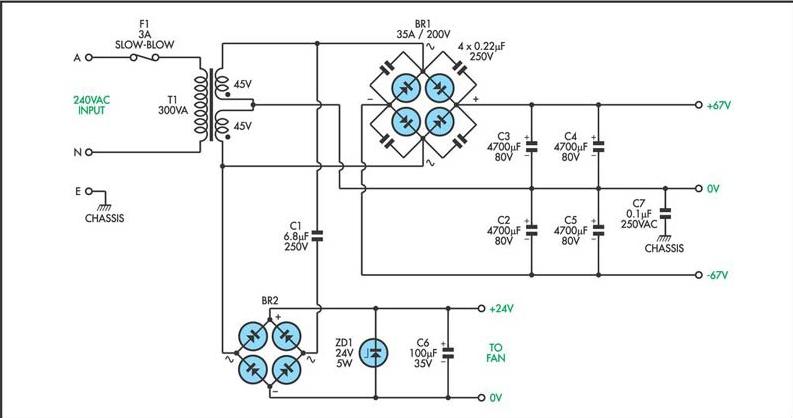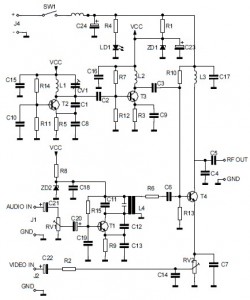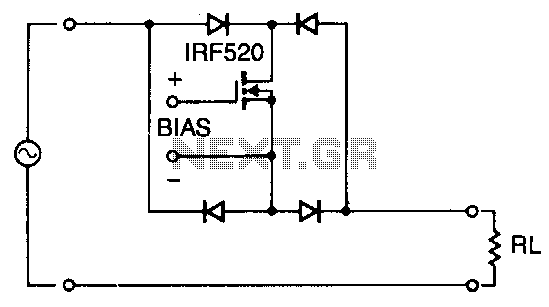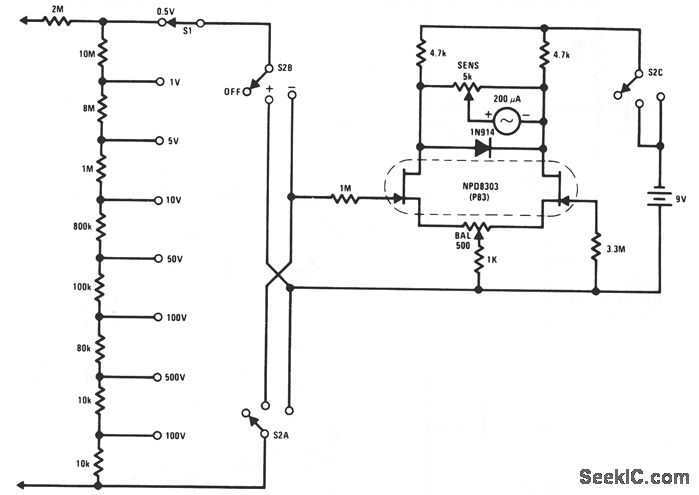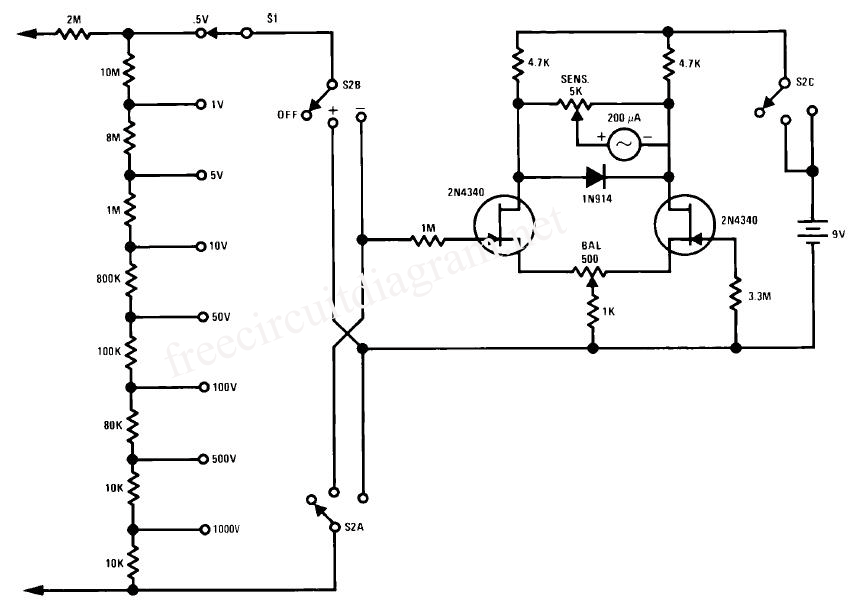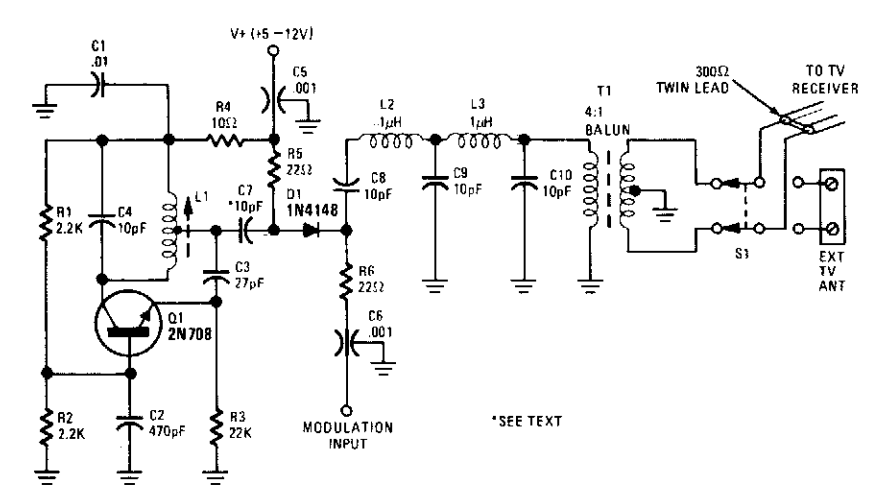
FET BALANCED MODULATOR FOR SSB

An audio frequency (AF) modulating signal is applied to the gates of matched field-effect transistors (FETs) configured in a push-pull arrangement via transformer T1, which features an accurately center-tapped secondary winding. The radio frequency (RF) carrier is simultaneously fed to the sources of the FETs in parallel through capacitor C3. In the output circuit, the RF carrier is canceled, resulting in the generation of two sidebands. Resistor R3 is utilized to adjust for any imbalance in the circuit components.
The described circuit employs matched FETs in a push-pull configuration, which is advantageous for achieving high efficiency and low distortion in modulation applications. The use of transformer T1 with a center-tapped secondary winding allows for effective coupling of the AF modulating signal to the gates of the FETs, ensuring that both devices operate in a complementary manner. The parallel connection of the RF carrier to the sources through capacitor C3 permits the RF signal to be present while isolating the audio frequency components.
The cancellation of the RF carrier in the output circuit is a critical aspect of this design, as it ensures that only the modulated sidebands remain, which carry the information from the AF signal. This is achieved through careful design of the output stage, which may include filters or other components to remove the carrier frequency while preserving the integrity of the sidebands.
Resistor R3 plays a pivotal role in maintaining balance within the circuit. Variations in component values or characteristics can lead to imbalances that affect performance, particularly in push-pull configurations where symmetry is essential for optimal operation. By adjusting R3, the designer can compensate for these discrepancies, ensuring that both FETs operate effectively and that the output signal remains clean and distortion-free.
This circuit is particularly relevant in applications such as amplitude modulation (AM) transmitters, where the quality of the modulation directly impacts the performance of the transmission. The careful selection and configuration of components, along with the implementation of balancing techniques, contribute to the overall effectiveness and efficiency of the modulation process.AF modulating signal is applied to gates of matched FETs in push-pull through T1 having accurately center-tapped secondary, and RF carrier is applied to sources in parallel through C3. Carrier is canceled in output circuit, leaving two sidebands. R3 is adjusted to correct for un-balance in circuit components. -R. P. Turner, "FET Circuits, " Howard W . Sams, Indianapolis, IN, 1977, 2nd Ed. , p 90-91. 🔗 External reference
The described circuit employs matched FETs in a push-pull configuration, which is advantageous for achieving high efficiency and low distortion in modulation applications. The use of transformer T1 with a center-tapped secondary winding allows for effective coupling of the AF modulating signal to the gates of the FETs, ensuring that both devices operate in a complementary manner. The parallel connection of the RF carrier to the sources through capacitor C3 permits the RF signal to be present while isolating the audio frequency components.
The cancellation of the RF carrier in the output circuit is a critical aspect of this design, as it ensures that only the modulated sidebands remain, which carry the information from the AF signal. This is achieved through careful design of the output stage, which may include filters or other components to remove the carrier frequency while preserving the integrity of the sidebands.
Resistor R3 plays a pivotal role in maintaining balance within the circuit. Variations in component values or characteristics can lead to imbalances that affect performance, particularly in push-pull configurations where symmetry is essential for optimal operation. By adjusting R3, the designer can compensate for these discrepancies, ensuring that both FETs operate effectively and that the output signal remains clean and distortion-free.
This circuit is particularly relevant in applications such as amplitude modulation (AM) transmitters, where the quality of the modulation directly impacts the performance of the transmission. The careful selection and configuration of components, along with the implementation of balancing techniques, contribute to the overall effectiveness and efficiency of the modulation process.AF modulating signal is applied to gates of matched FETs in push-pull through T1 having accurately center-tapped secondary, and RF carrier is applied to sources in parallel through C3. Carrier is canceled in output circuit, leaving two sidebands. R3 is adjusted to correct for un-balance in circuit components. -R. P. Turner, "FET Circuits, " Howard W . Sams, Indianapolis, IN, 1977, 2nd Ed. , p 90-91. 🔗 External reference
